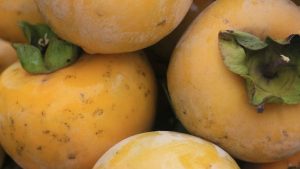
10 Tips for Growing Citrus at Home
Growing citrus at home can be a rewarding and delicious hobby. Not only do citrus trees provide beautiful and fragrant blooms, but they also yield fresh, juicy fruit that can be used in a variety of dishes. Here are 10 tips for successfully growing citrus at home.
Tip#1 Choose the right tree for your climate.
Citrus trees are tropical and subtropical plants, and they require warm temperatures to thrive. If you live in a cooler climate, you’ll need to choose a dwarf variety that can be grown in a container and brought indoors during the winter. Some citrus varieties that can be grown in cooler climates include calamondin, kumquat, and meyer lemon. When it comes to selecting the right tree for your climate, it’s important to do your research and choose a variety that is known to be hardy in your area. Also, consider how much space you have available in your yard or garden, as some citrus trees can grow quite large.
It’s also important to note that citrus trees are not cold hardy, so if you live in an area with cold winters, you’ll need to take steps to protect your tree from frost and freezing temperatures. One option is to grow your tree in a container and bring it indoors during the winter. Another option is to choose a dwarf variety that can be grown in a greenhouse or sunroom.
Tip#2 Plant in well-draining soil.
Citrus trees need well-draining soil to prevent root rot. If your soil is heavy clay or doesn’t drain well, you can amend it with sand or organic matter to improve drainage. Also, it is important to make sure the tree is planted in an area that does not get waterlogged. When it comes to planting, citrus trees need well-draining soil. The soil needs to be kept consistently moist but not waterlogged.
If your soil is heavy clay or doesn’t drain well, you can amend it with sand or organic matter to improve drainage. This is important to ensure that the tree is planted in an area that does not get waterlogged.
Tip#3 Provide plenty of sunlight.
Citrus trees need full sunlight to thrive. Plant your tree in an area that gets at least 6-8 hours of direct sunlight each day. If you’re growing a citrus tree indoors, make sure to place it near a sunny window. When it comes to sunlight, citrus trees need full sunlight to thrive.
They need at least 6-8 hours of direct sunlight each day. If you’re growing a citrus tree indoors, make sure to place it near a sunny window. This will help ensure that your tree receives the light it needs to grow strong and healthy.
Tip#4 Water regularly.
Citrus trees need to be kept consistently moist, but not waterlogged. Water your tree once or twice a week, depending on the weather and the soil’s moisture level. Make sure to check the soil moisture before watering. When it comes to watering, citrus trees need to be kept consistently moist but not waterlogged. It’s important to check the soil moisture before watering, so you don’t over-water your tree. Water your tree once or twice a week, depending on the weather and the soil’s moisture level.
Tip#5 Fertilize regularly.
Citrus trees need regular fertilization to promote healthy growth and fruit production. Use a citrus-specific fertilizer or a balanced fertilizer with a high middle number (such as 8-8-8) every 4-6 weeks during the growing season. When it comes to fertilization, citrus trees need regular fertilization to promote healthy growth and fruit production. It is recommended to use a citrus-specific fertilizer or a balanced fertilizer with a high middle number (such as 8-8-8) every 4-6 weeks during the growing season.
When selecting a fertilizer, it is important to choose one that is specifically formulated for citrus trees. These types of fertilizers will provide the necessary nutrients for your tree to grow strong and healthy. Additionally, it is important to follow the instructions on the fertilizer package for the correct application rate.
Tip#6 Prune to shape and control size.
Citrus trees can grow quite large, so regular pruning is necessary to control their size and shape. Prune your tree in late winter or early spring, before new growth begins. Remove any dead or diseased branches, and shape the tree to your desired size and shape. When it comes to pruning, citrus trees can grow quite large, so regular pruning is necessary to control their size and shape.
It’s recommended to prune your tree in late winter or early spring, before new growth begins. This will help promote healthy growth for the coming season. During the pruning process, remove any dead or diseased branches, and shape the tree to your desired size and shape.
Tip#7 Control pests and diseases.
Citrus trees are susceptible to a variety of pests and diseases, such as citrus leafminers, scale insects, and citric black spot. To control pests and diseases, regularly inspect your tree for signs of infestation or infection, and treat any problems as soon as they’re detected. When it comes to pests and diseases, citrus trees are susceptible to a variety of issues, such as citrus leafminers, scale insects, and citric black spot.
It’s important to regularly inspect your tree for signs of infestation or infection, and treat any problems as soon as they’re detected. This will help prevent the problem from spreading and becoming more severe.
Tip#8 Provide proper humidity.
Citrus trees prefer high humidity, so if you live in a dry climate, you may need to provide additional humidity to your tree. Mist the leaves of your tree daily, or place a tray of water near the base of the tree to increase humidity. When it comes to humidity, citrus trees prefer high humidity. If you live in a dry climate, you may need to provide additional humidity to your tree.
One way to do this is by misting the leaves of your tree daily. Another way is by placing a tray of water near the base of the tree. This will help increase the humidity around the tree, which will help it grow strong and healthy.
Tip#9 Harvest at the right time.
Citrus fruit is usually ready to harvest in the late fall or winter. The fruit should be fully colored and slightly soft when it is ready to be picked. When it comes to harvesting, citrus fruit is usually ready in the late fall or winter. It’s important to wait until the fruit is fully colored and slightly soft before picking. This will ensure that the fruit is ripe and will taste the best.
Tip#10 Enjoy the fruit.
When your citrus tree is producing fruit, it is a great idea to use it in different recipes, from marmalades, jams, and jellies to savory dishes and desserts. Citrus fruits like lemons, limes, oranges, and grapefruits are a staple in many recipes and can add a burst of flavor to any dish. When it comes to using the fruit, there are many different ways to enjoy citrus fruits. You can make marmalades, jams, and jellies.
If you are interested in growing other fruits, check out these other articles: How to grow raspberries, How to grow dates, How to grow mango, How to grow pomegranate, How to grow pomelo, How to grow kiwi, How to grow strawberry, How to grow currants, How to grow khaki, How to grow cranberries, How to grow bananas, How to grow blueberries, How to grow blackberries, How to grow pineapples, How to grow lemons.













